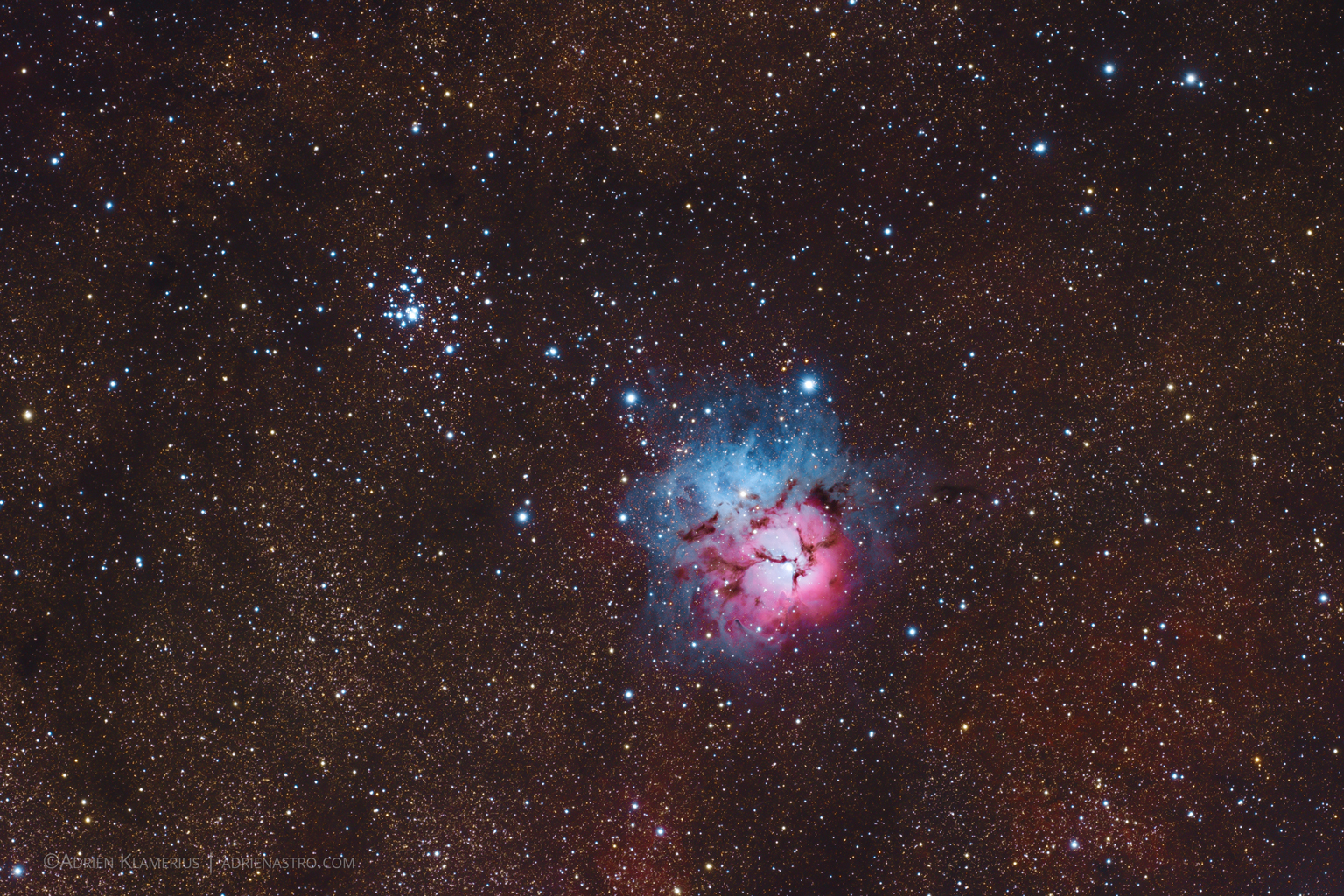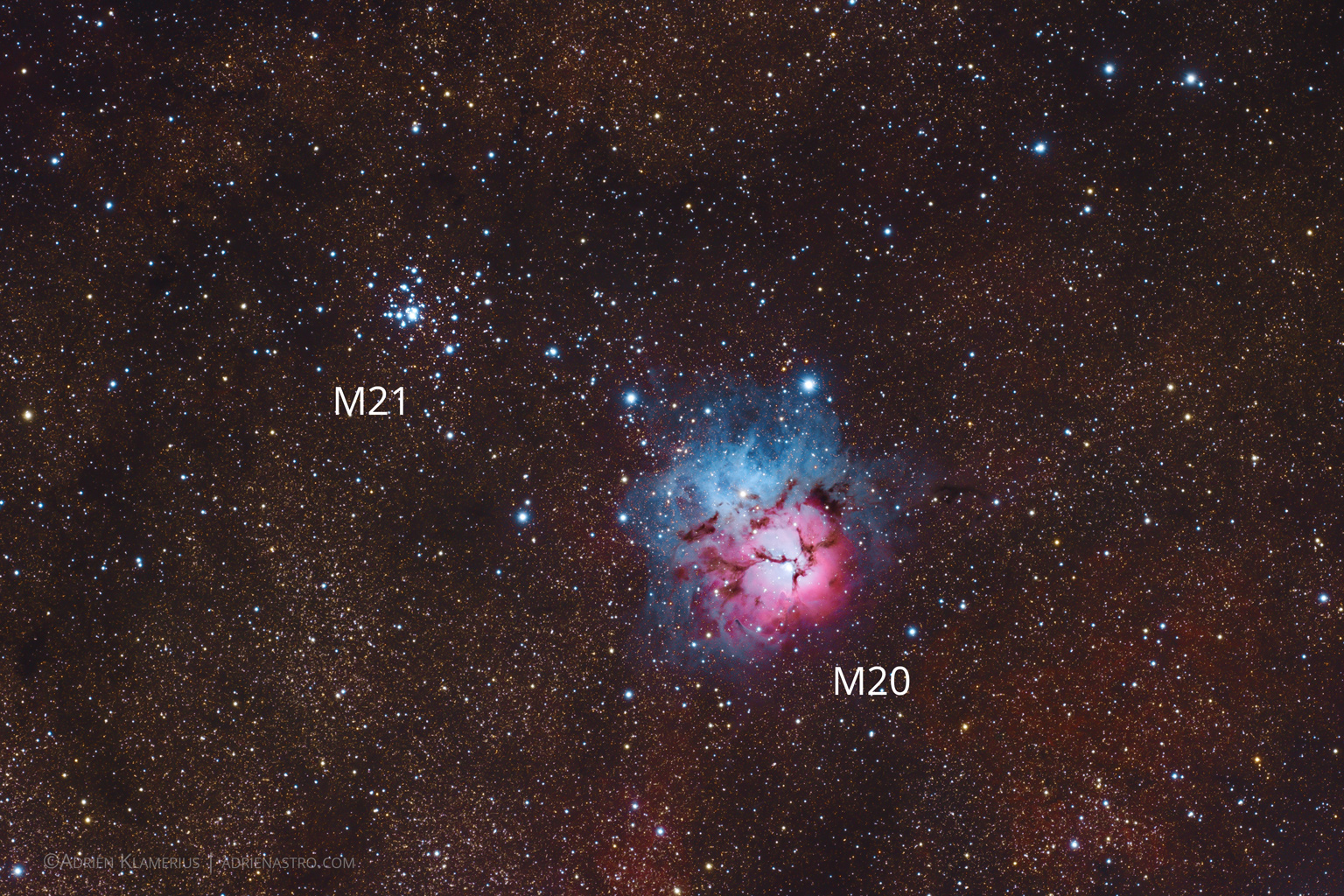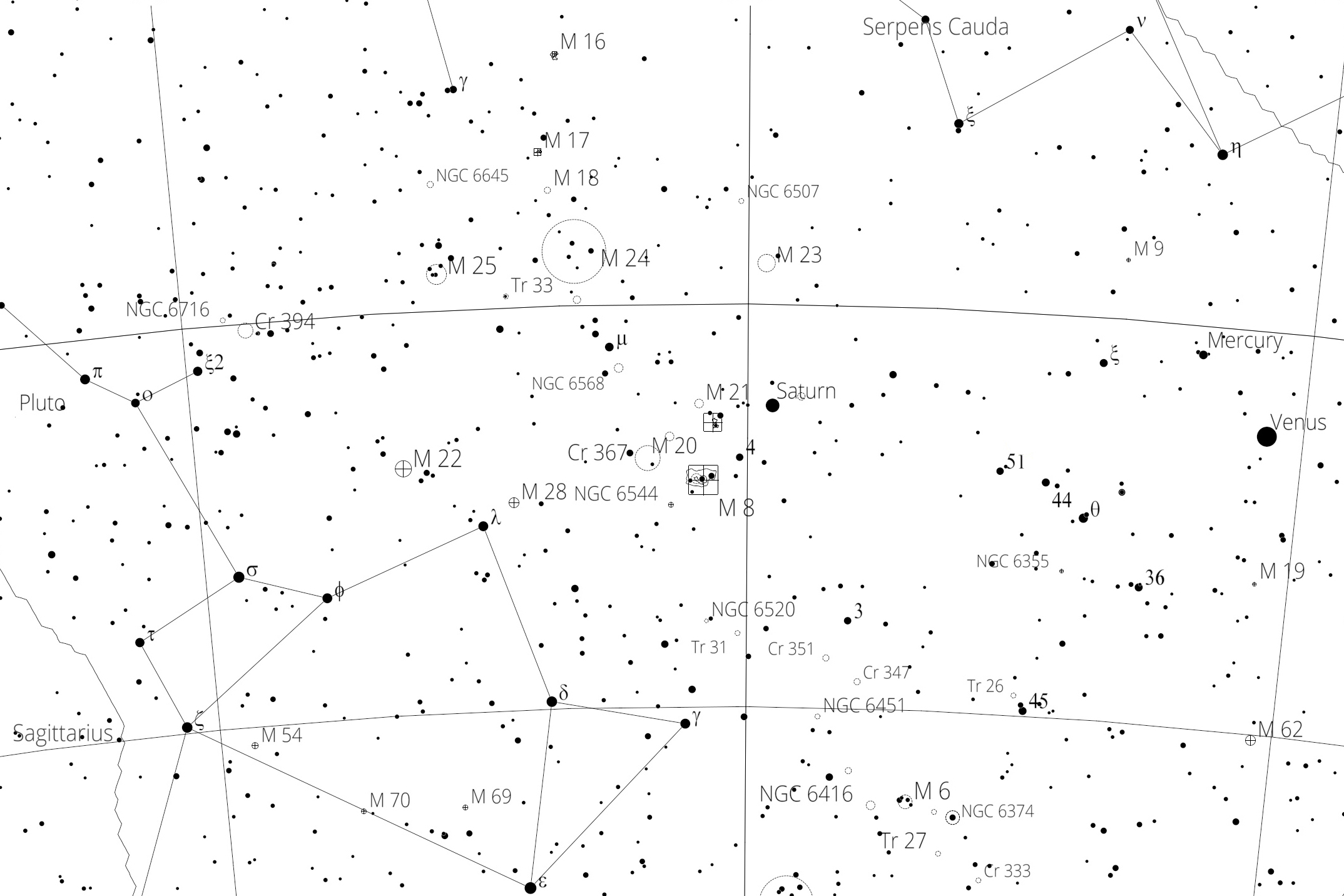The Trifid Nebula, also known as M20, is a star forming region in the plane of our own galaxy. The Trifid Nebula exemplifies three different types of astronomical nebulae; red emission nebulae dominated by light from hydrogen atoms, blue reflection nebulae produced by dust reflecting starlight, and dark nebulae where dense dust appears in silhouette.
Its name comes from the Latin word "trifid," meaning "divided into three lobes," as dark, obscuring dust lanes appear to divide it into three parts. These dark nebulae are identified as Barnard 82.
The entire Trifid Nebula is about the size of the full moon on our night sky, spans 40 light-years across, is approximately 300,000 years old, and lies about 5,000 light-years away from Earth in the nebula-rich constellation Sagittarius.
The background of this image has a dense starfield that is rich in interstellar material, as it’s located in the Scutum spiral arm of the Milky Way. One of the youngest star-forming regions in our sky, with newborn and future stars embedded in its natal dust and gas clouds.
M21 is relatively young and tightly packed star cluster, near the Trifid Nebula. At a distance of 4,250 light years from Earth, this group of 57 various magnitude stars all started life together about 4.6 million years ago.
The Trifid Nebula was discovered in 1764 by the French astronomer Charles Messier, who originally catalogued it as Messier 20, or M20.
INSTRUMENT Takahashi FSQ-106
CAMERA Canon EOS 60Da
MOUNT Skywatcher HEQ5
GUIDING Lacerta MGen Autoguider
EXPOSURE TIME 58x4min iso 1600
LOCATION Namibia, Isabis Farm
DATE 2018.05.14





